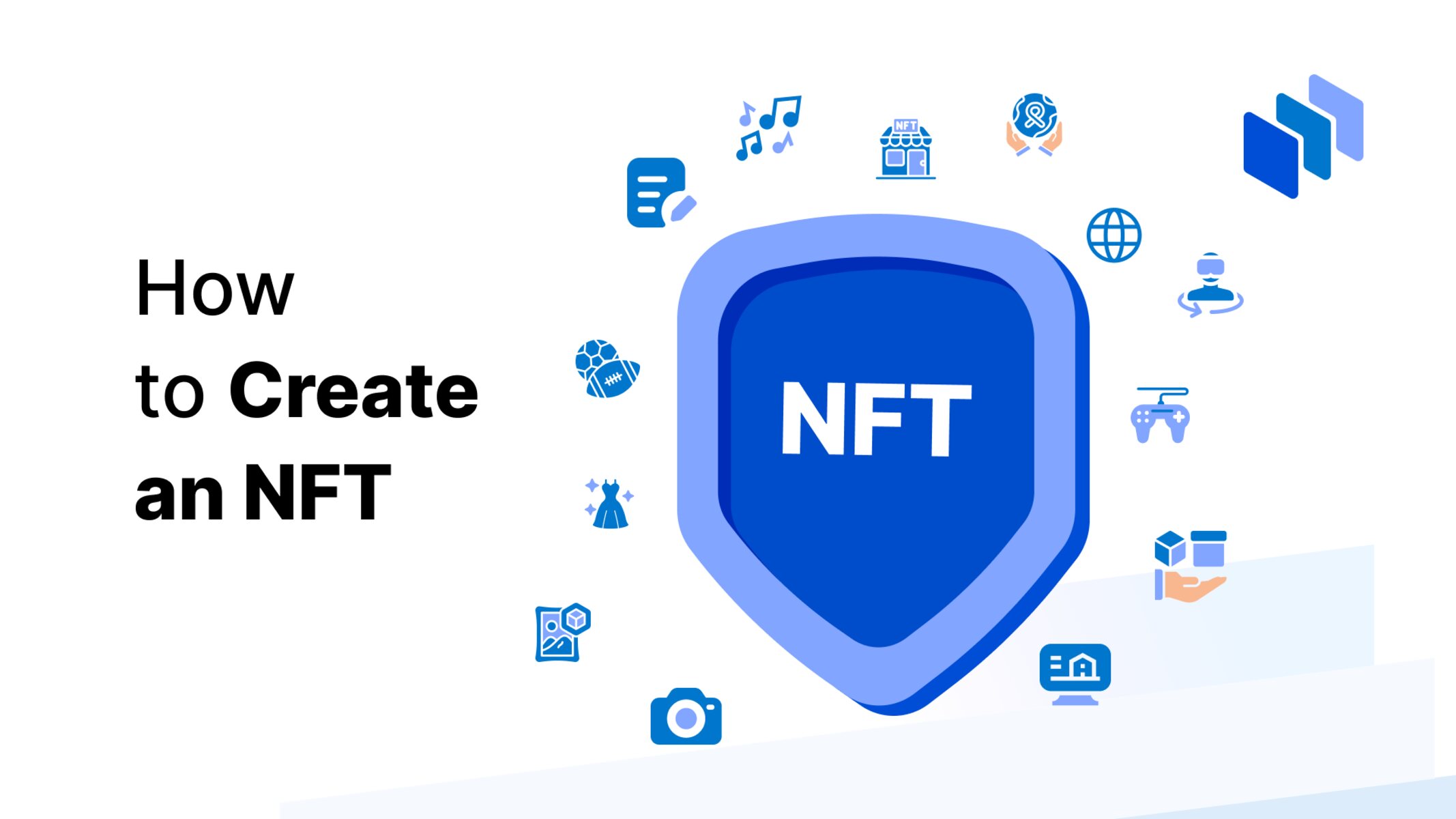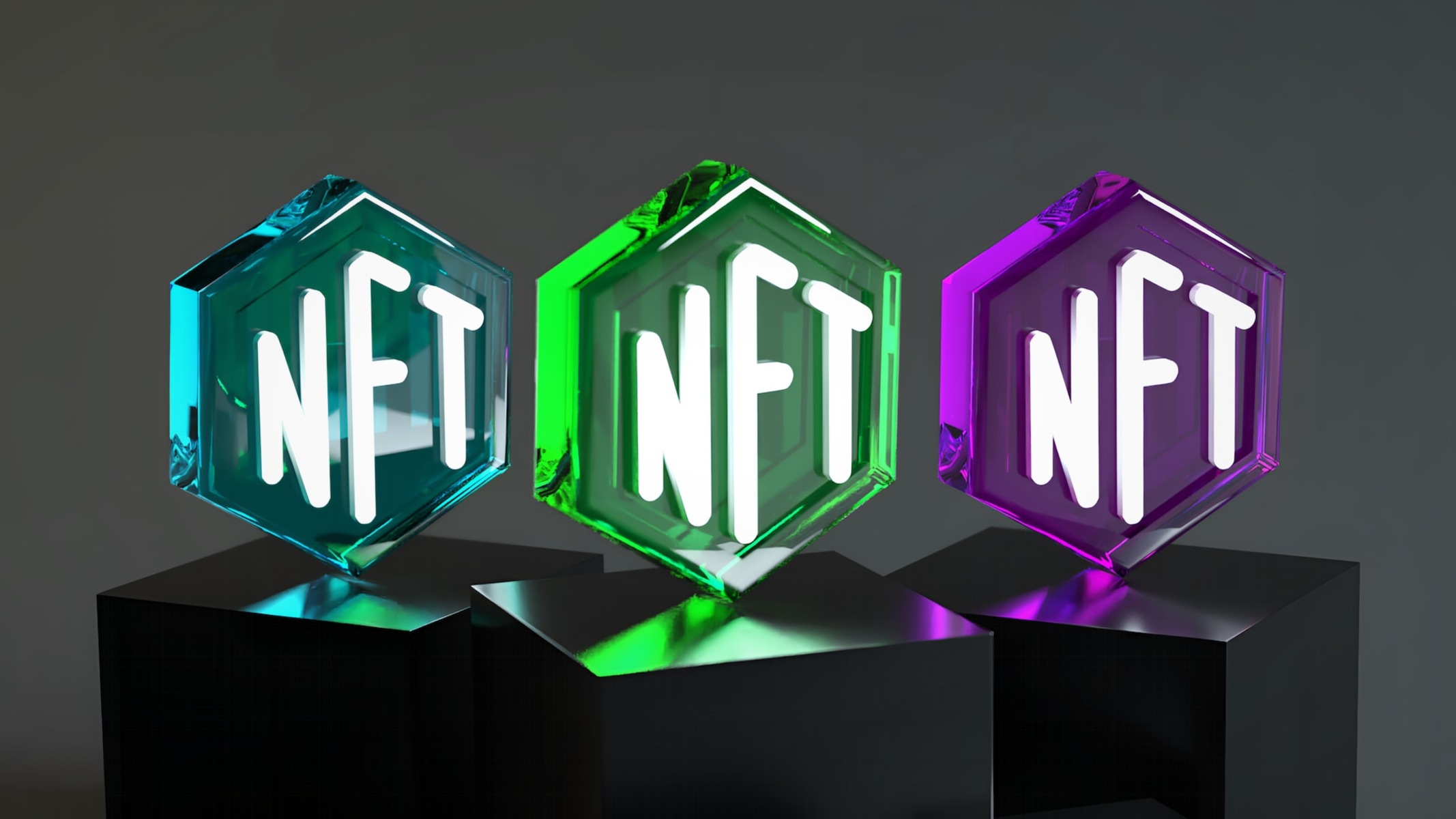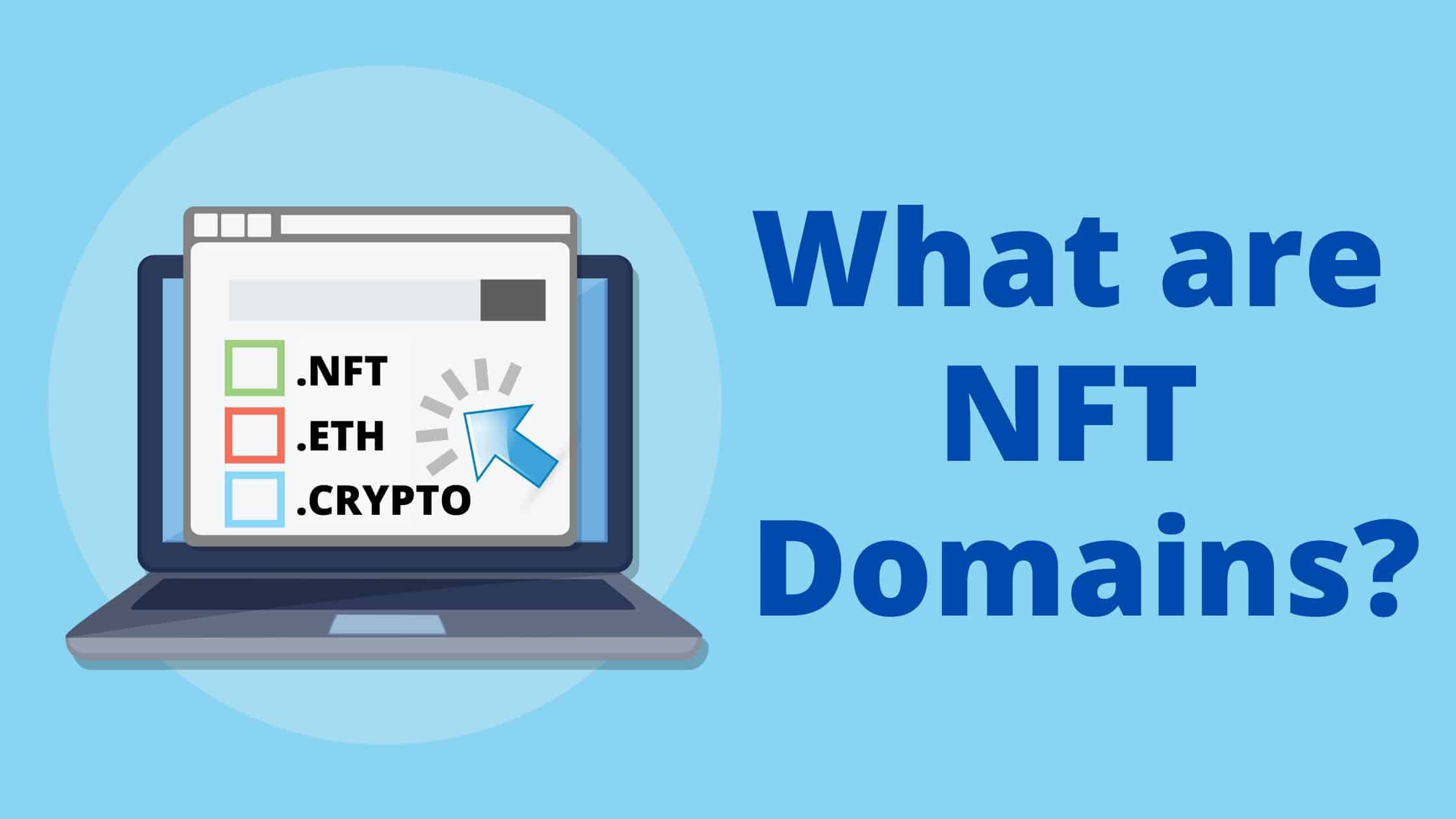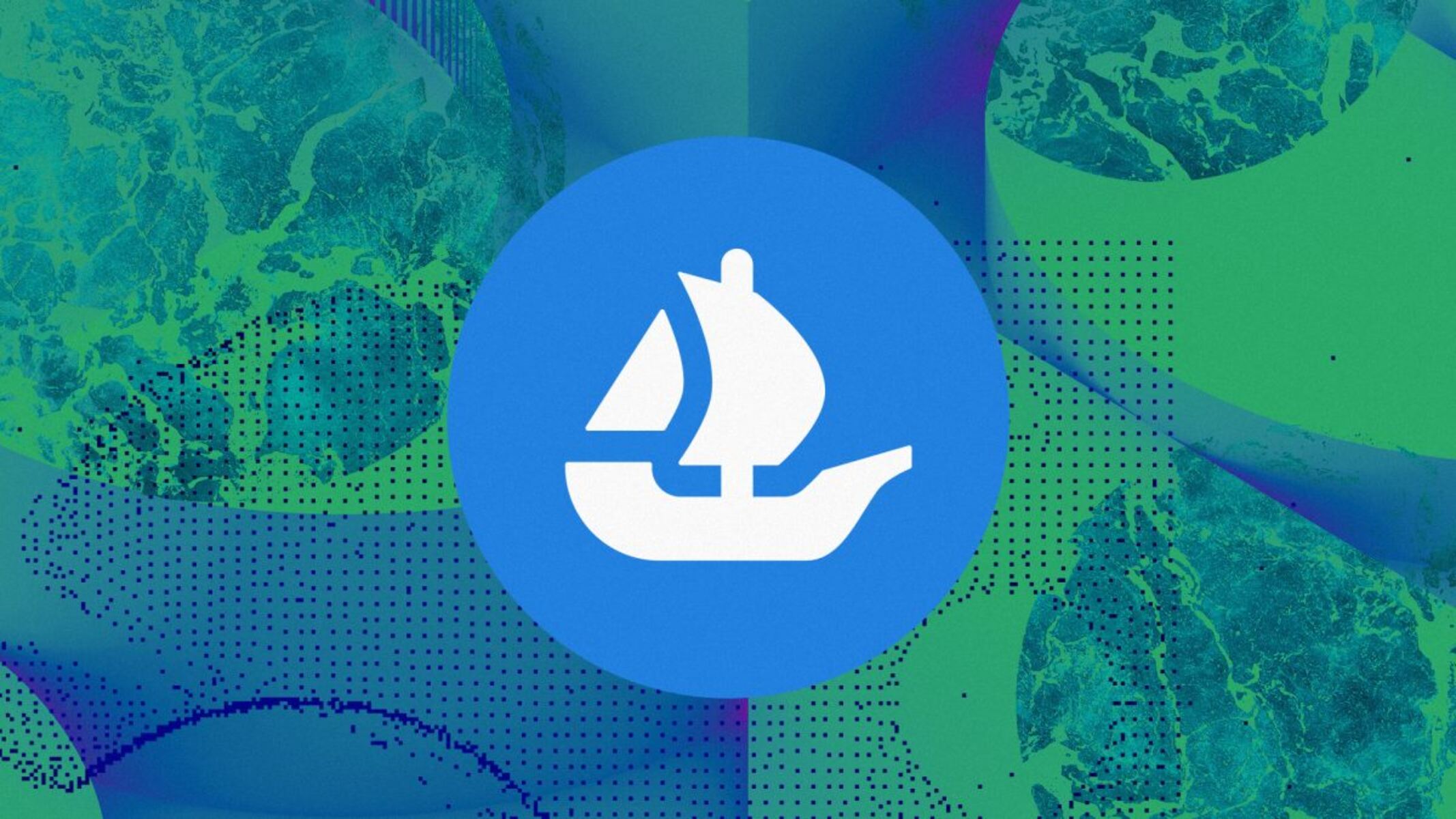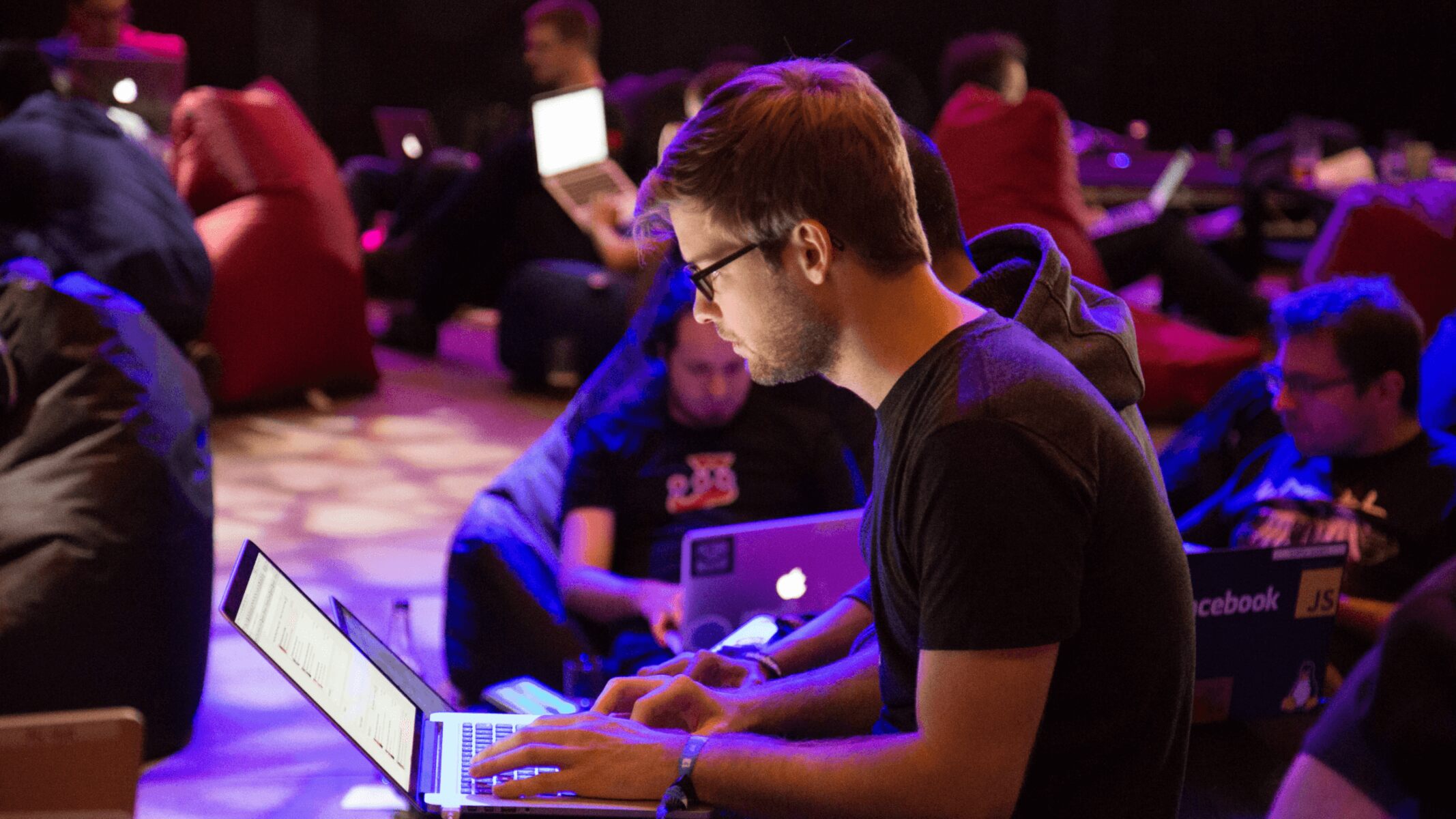Introduction
Welcome to the exciting world of NFTs! In recent years, Non-Fungible Tokens (NFTs) have gained significant attention, revolutionizing the way we view and trade digital assets. These unique tokens have opened up new opportunities for artists, content creators, and collectors, allowing them to tokenize and sell their work securely on the blockchain.
But what exactly is an NFT? NFTs are digital assets that represent ownership or proof of authenticity of a specific item, whether it’s artwork, music, videos, virtual real estate, or even virtual items in games. Unlike cryptocurrencies such as Bitcoin or Ethereum, which are interchangeable and uniform, NFTs are indivisible and unique, making them valuable and collectible.
To understand the concept of NFTs, it is essential to grasp the underlying technology behind them: blockchain. At its core, blockchain is a decentralized and transparent digital ledger that records all transactions and ownership details securely. This technology ensures the authenticity and provenance of each NFT by providing a permanent and immutable record of its history.
If you’re eager to get started with creating your own NFTs, there are a few key steps you need to follow. Firstly, you’ll need to choose a suitable blockchain platform that supports NFT creation and transactions. Ethereum is the most popular choice, but alternatives like Binance Smart Chain and Flow are also gaining traction.
Next, you’ll need to create the digital artwork or asset that you want to tokenize. This can be a piece of visual art, music, a video clip, or even a virtual property. The key is to ensure that your creation is unique and original, as this will increase its value and attractiveness to potential buyers.
Once your digital asset is ready, the next step is to mint it into an NFT. Minting involves transforming your digital creation into a token that can be bought, sold, and owned on the blockchain. During this process, you’ll also need to decide on the royalties and licenses associated with your NFT, which will determine how you earn ongoing revenue and how others can use your work.
After minting, it’s time to select a suitable marketplace to list and sell your NFT. There are numerous online platforms dedicated to NFT trading, each with its own unique features and user base. Often, these platforms will require you to pay a fee or follow specific guidelines for listing your NFT, so it’s crucial to research and choose wisely.
Finally, once your NFT is listed, you’ll need to manage and promote your creation to attract potential buyers. Utilize social media, forums, and online communities to showcase your work, engage with interested individuals, and build a strong reputation as an NFT creator.
In this article, we will guide you through each step of the process, providing insights and recommendations to help you navigate the exciting world of NFT creation. So, let’s dive in and discover how you can start creating and selling your own NFTs!
What is an NFT?
In the digital age, the concept of ownership and scarcity has been redefined with the advent of Non-Fungible Tokens (NFTs). Unlike cryptocurrencies such as Bitcoin or Ethereum, which are fungible and can be exchanged on a one-to-one basis, NFTs are unique and indivisible digital assets.
NFTs are built on the same blockchain technology as cryptocurrencies, which ensures transparency, security, and immutability. However, what sets NFTs apart is their ability to represent ownership and authenticity of tangible or intangible items in the digital realm.
With NFTs, artists can tokenize their artworks, musicians can tokenize their music, and even virtual goods in gaming environments can be tokenized. Each NFT holds distinct characteristics that differentiate it from any other token, making it as unique as an original painting or a rare collectible.
One of the key features of NFTs is their ability to prove ownership and provenance. Through the blockchain, a transparent and decentralized ledger, every transaction and transfer of an NFT is recorded and verified, providing an immutable trail of its history.
This feature holds immense value in the world of digital art, where artists have long struggled with issues of authenticity and copyright infringement. NFTs offer a solution by providing a verifiable certificate of ownership, ensuring that the artist receives proper recognition and compensation for their work.
Moreover, NFTs introduce the concept of royalty and residual income streams for artists. When an NFT is resold in the secondary market, the creator can set a royalty percentage that they will receive every time the token changes hands. This ensures ongoing revenue and rewards artists for the increasing value of their work.
For collectors and enthusiasts, NFTs offer a new and exciting way to engage with digital content. By owning an NFT, individuals have exclusive access to a specific digital item or experience, whether it’s a rare artwork, a first-edition music album, or even virtual land in a metaverse.
Another fascinating aspect of NFTs is their potential for interactivity and programmability. NFTs can be designed with smart contracts, allowing creators to embed specific functionalities or unlockable content within each token. This opens up possibilities for interactive experiences and dynamic ownership of digital assets.
While NFTs have gained immense popularity and have been associated with multimillion-dollar transactions, it’s important to note that the market is still evolving and can be subject to volatility. However, the underlying technology and the fundamental shift in ownership and value perception cannot be ignored.
As we delve into the world of NFT creation and trading, it’s vital to recognize the transformative power that NFTs hold. They present new opportunities for artists, creators, and collectors to participate in the digital art revolution, creating a more inclusive and decentralized art ecosystem.
Understanding Blockchain Technology
To truly grasp the concept of Non-Fungible Tokens (NFTs), it is essential to have a solid understanding of the underlying technology that powers them: blockchain. In simple terms, blockchain is a decentralized digital ledger that records and verifies transactions in a transparent and secure manner.
At its core, blockchain is a distributed network of computers, known as nodes, that work together to validate and store every transaction made on the network. This decentralization ensures that no single entity has control over the ledger, making it resistant to manipulation and censorship.
Each transaction recorded on the blockchain is grouped together in a block, forming a chronological chain. These blocks are linked to each other using cryptographic hashes, creating an immutable and tamper-proof record of all transactions.
One of the key advantages of blockchain technology is its transparency. As the ledger is accessible to anyone on the network, all transactions can be easily audited and verified. This transparency is crucial in the context of NFTs, as it provides proof of ownership, provenance, and authenticity.
Blockchain technology also ensures security through its cryptographic algorithms. Each transaction is encrypted and linked to the previous block, making it virtually impossible to alter or tamper with the data stored on the blockchain. This makes blockchain an ideal solution for securing digital assets and verifying their integrity.
Another important aspect of blockchain technology is its decentralization. Traditional centralized systems rely on a single authority or intermediary to validate and verify transactions. In contrast, blockchain removes the need for intermediaries, allowing for peer-to-peer transactions and eliminating unnecessary fees or delays.
Moreover, blockchain enables smart contracts, which are self-executing agreements with predefined rules encoded into the blockchain. Smart contracts automatically execute transactions when specific conditions are met, removing the need for intermediaries and ensuring trust and transparency.
While blockchain has gained prominence primarily in the cryptocurrency space, its potential extends far beyond digital currencies. The use of blockchain technology in NFTs has opened up new possibilities for artists, creators, and collectors to tokenize and trade digital assets in a secure, transparent, and globally accessible manner.
However, it’s important to note that blockchain technology is still evolving, and there are challenges and limitations to consider. Issues such as scalability, energy consumption, and user experience need to be addressed to fully unlock the potential of blockchain in the context of NFTs.
As blockchain continues to evolve and mature, it has the potential to disrupt various industries by revolutionizing the way assets are managed, owned, and traded. With NFTs as a prime example of blockchain’s applications, it’s clear that this technology holds immense promise for the future of digital ownership and creativity.
Choosing a Blockchain Platform
When it comes to creating and minting Non-Fungible Tokens (NFTs), one of the critical decisions you’ll need to make is choosing the right blockchain platform. A blockchain platform serves as the foundation for minting and trading NFTs, so it’s crucial to select a platform that aligns with your needs, goals, and the specific requirements of your digital assets.
Currently, Ethereum is the most popular and widely adopted blockchain platform for NFTs. It offers a vibrant ecosystem, a robust developer community, and established marketplaces for buying and selling NFTs. Ethereum’s dominance in the NFT space can be attributed to its smart contract functionality, which allows for the creation of unique tokens and the development of decentralized applications (DApps).
However, Ethereum’s popularity has also led to network congestion and high gas fees, which can significantly impact the cost and speed of minting NFTs. As a result, alternative blockchain platforms have emerged that offer solutions to these scalability and cost issues.
One alternative is Binance Smart Chain (BSC), which provides faster transaction times and lower fees compared to Ethereum. BSC is compatible with the Ethereum Virtual Machine (EVM), meaning that many Ethereum-based NFTs can easily be ported to BSC. Additionally, BSC offers its own decentralized marketplace, PancakeSwap, which provides a platform for NFT trading.
Another option to consider is Flow, a blockchain platform specifically designed for NFTs and interactive digital experiences. Flow differentiates itself by focusing on scalability and user-friendly applications, making it an attractive choice for creators and collectors in the NFT space. Flow has gained traction due to its partnerships with popular brands and its ability to handle large-scale NFT drops.
When choosing a blockchain platform, it’s also essential to consider the community and user base associated with each platform. Ethereum boasts a significant number of developers, artists, and collectors, making it a vibrant and active ecosystem. On the other hand, emerging platforms like BSC and Flow are growing rapidly and attracting their own communities.
It’s worth noting that each blockchain platform comes with its own set of tools, documentation, and programming languages. Ensuring that you are comfortable and familiar with the platform’s ecosystem is crucial for smooth development and integration of your NFTs.
Ultimately, the decision of which blockchain platform to choose for your NFT creation depends on various factors, including your specific use case, budget, and technical requirements. As the NFT landscape continues to evolve, new platforms may emerge, offering innovative solutions and addressing the current limitations of existing platforms.
By carefully evaluating and selecting the right blockchain platform, you can lay a solid foundation for the creation, minting, and trading of your NFTs, ensuring that your digital assets are secure, accessible, and aligned with your goals as an artist or creator.
Creating Your Digital Artwork
When venturing into the world of Non-Fungible Tokens (NFTs), creating captivating and unique digital artwork is a crucial step in the creation process. Your digital artwork serves as the foundation for your NFT and plays a vital role in attracting potential buyers and collectors.
Creating digital artwork for NFTs offers a wide array of possibilities, allowing you to explore various mediums such as digital painting, 3D modeling, photography, animation, or even generative art. The key is to showcase your creativity and ensure that your artwork stands out in the ever-growing NFT marketplace.
Here are a few key considerations to keep in mind as you embark on creating your digital artwork:
Originality: Creating original and unique artwork is essential in the NFT space. While it’s possible to tokenize existing digital pieces, providing something fresh and distinct increases the value and desirability of your NFTs. Experiment with different styles, techniques, and concepts to bring your artistic vision to life.
Quality: Pay attention to the quality of your digital artwork. Ensure that your pieces are high-resolution and visually appealing. This includes optimizing your artwork for different display sizes and formats to ensure optimal viewing experiences across various devices and platforms.
Storytelling: Art has the power to tell stories and evoke emotions. Consider incorporating narratives, themes, or messages into your digital artwork to make them more engaging and meaningful. Connect with your audience through your art and enable them to connect with your vision.
Experimentation: The NFT space thrives on innovation and experimentation. Don’t be afraid to push boundaries, try new techniques, and explore unique ideas. Embrace the possibilities offered by digital tools, software, and emerging technologies to create artwork that captures attention and stands out from the crowd.
Collaboration: Collaboration within the NFT community can be a powerful way to expand your artistic horizons. Consider partnering with other artists, musicians, or creators to collaborate on a combined NFT project. This can bring together different skills and perspectives to create something truly remarkable.
Metadata and Documentation: As you create your digital artwork, keep in mind the importance of metadata and documentation. Metadata provides additional information about your artwork, such as the title, description, and edition details. Thorough documentation adds credibility and transparency, fostering trust and connection with potential buyers.
Remember, the creation of digital artwork for NFTs is an ongoing process of growth and exploration. Continuously refine your skills, experiment with new techniques, and embrace feedback from the community to evolve as an artist and creator.
By investing time and effort into creating captivating and original digital artwork, you lay a strong foundation for the success of your NFTs and position yourself for a meaningful and rewarding journey in the NFT space.
Minting Your NFT
Once you have created your digital artwork, the next step in the process of entering the Non-Fungible Token (NFT) market is minting your NFT. Minting involves transforming your digital creation into a unique token that represents ownership and authenticity on the blockchain.
To mint an NFT, you will need to choose a blockchain platform that supports NFT creation and transactions. Ethereum is the most popular platform for minting NFTs, but alternatives like Binance Smart Chain and Flow also offer minting capabilities.
Here are the steps to mint your NFT:
1. Choose a Wallet: Select a digital wallet that is compatible with your chosen blockchain platform. A wallet serves as a digital vault for your cryptocurrencies and NFTs. It allows you to securely store, manage, and interact with your digital assets.
2. Connect your Wallet: Connect your digital wallet to the blockchain platform you’ve chosen. This connection enables you to interact with the platform, including minting and trading NFTs.
3. Prepare your NFT Metadata: NFT metadata includes essential information about your artwork, such as the title, description, image or media file, and any additional attributes or properties. Take the time to provide accurate and detailed metadata as it enhances the value and understanding of your NFT.
4. Select a Minting Platform: Choose a minting platform or marketplace that aligns with your goals and target audience. Popular platforms include OpenSea, Rarible, and Mintable. These platforms provide the necessary tools and interface for minting your NFT and listing it for sale.
5. Mint your NFT: Follow the instructions provided by your chosen minting platform to create and upload your digital artwork as an NFT. This process typically involves specifying the metadata, setting a price or auction details, and confirming the transaction on the blockchain.
6. Pay Minting Fees: Keep in mind that minting an NFT usually incurs fees, such as gas fees on Ethereum, which cover the computational resources required to execute the transaction on the blockchain. Be prepared to pay these fees, which vary depending on network congestion and the complexity of the transactions.
7. Verify and Collect your NFT: Once the minting process is complete, you will receive a transaction receipt or confirmation, indicating the successful creation and ownership of your NFT. This receipt contains a unique identifier, known as the token ID, which distinguishes your NFT from others on the blockchain.
Minting your NFT is an exciting milestone that marks the official entry of your digital artwork into the world of blockchain and digital ownership. It establishes a verifiable record of authenticity, ownership, and the immutable history of your NFT.
After successfully minting your NFT, you have the option to hold onto it, showcase it in your collection, or list it for sale on various marketplaces. The minting process is just the beginning of your NFT journey, where marketing, promotion, and engagement with the NFT community become crucial for the success of your digital artwork.
Deciding on Royalties and Licenses
When minting your Non-Fungible Token (NFT), one important consideration is deciding on the royalties and licenses associated with your digital artwork. Royalties determine the percentage of the future sale price that you, as the creator, will receive each time your NFT is sold in the secondary market. Licenses, on the other hand, specify the terms under which others can use and interact with your NFT. These decisions play a crucial role in determining your ongoing revenue and how your artwork can be used by others.
Royalties: When it comes to royalties, you have the opportunity to earn ongoing income as your NFT is resold in the secondary market. You can decide the percentage of the sale price that you will receive as a royalty fee, typically ranging from 10% to 20% of the sale price. By setting royalties, you can benefit from the increasing value of your artwork and ensure that subsequent sales generate revenue for you. When selecting a blockchain platform or marketplace for minting and selling your NFTs, make sure to check their royalty mechanisms and ensure that they provide the option to set royalty fees.
Licenses: Alongside royalties, licenses define how others can use your NFT. There are various types of licenses that you can consider, depending on your preferences and intentions for your artwork. Some common license types include Creative Commons licenses, which grant specific permissions for use, and exclusive licenses, which restrict the use of your artwork to the buyer. You can also consider licenses that allow for commercial use, derivative works, or limit usage rights to personal enjoyment only. It’s important to carefully consider the license you choose, as it will determine how others can interact with and utilize your NFT. Be sure to clearly communicate the terms and conditions of your chosen license to potential buyers and include them in the metadata of your NFT.
When deciding on royalties and licenses, there are a few additional factors to consider. First and foremost, think about your long-term goals and the overall strategy for your digital artwork. Consider the balance between earning potential and the accessibility of your artwork to a wider audience. Depending on your objectives, you may opt for higher royalties or choose more permissive licenses to encourage broader use and exposure.
It’s also important to research and understand the legal and regulatory implications of royalties and licenses in the jurisdiction(s) where you operate. Intellectual property laws vary across countries, so be sure to consult with legal professionals to ensure that your chosen royalties and licenses comply with applicable regulations.
As the NFT market evolves, new standards and mechanisms for royalties and licenses may emerge, providing creators with additional options and flexibility. Stay updated on industry trends and best practices to optimize your revenue and protect the rights and integrity of your digital artwork.
Deciding on royalties and licenses is a significant aspect of minting your NFT. It allows you to create a sustainable model for generating ongoing income from your artwork while defining how others can interact with and benefit from your creative endeavors. By carefully considering and implementing these choices, you can maintain control over your artwork and ensure its value is protected in the rapidly expanding NFT ecosystem.
Selecting a Marketplace
Once you have minted your Non-Fungible Token (NFT), the next step is to select a suitable marketplace to list and sell your digital artwork. The marketplace you choose will play a crucial role in determining the visibility, discoverability, and potential sales of your NFT.
With a wide range of marketplaces available, it’s important to carefully consider various factors before making a decision:
Popularity and User Base: Look for marketplaces with a large and active user base. Platforms like OpenSea, Rarible, and SuperRare have established themselves as popular and reputable platforms in the NFT space, attracting a significant number of buyers and sellers. A larger user base increases the chances of your artwork being discovered and sold.
Platform Fees: Evaluate the fee structure of different marketplaces. Most platforms charge a percentage fee on each transaction, usually ranging from 2% to 10%. Consider the fees in relation to the expected selling price of your artwork and the services provided by the marketplace, such as promotion, curation, and gas fees coverage.
Exclusivity and Curation: Some marketplaces focus on curating their collections and maintaining a level of exclusivity. These curated platforms often have a more stringent selection process, showcasing high-quality and unique artworks. Consider whether you prefer to join a curated marketplace or opt for a more open platform where anyone can list their NFTs.
Smart Contract Flexibility: Evaluate the capabilities and flexibility of the smart contracts used by the marketplace. Some marketplaces allow for additional features like royalties, unlockable content, and interactive elements within the smart contracts. These features can enhance the value and appeal of your NFT.
Community and Engagement: Assess the level of community engagement and support within each marketplace. Look for platforms where artists and collectors actively participate, interact, and provide feedback. Engaging with like-minded individuals can help you build connections, gain exposure, and receive valuable insights.
Secondary Market Options: Consider whether the marketplace offers a secondary market where your NFT can be resold by buyers. Having a robust secondary market can create a sense of liquidity and ongoing demand for your artwork, potentially leading to increased value and royalties.
User Experience: Evaluate the user experience and interface of different marketplaces. Look for platforms with an intuitive and user-friendly design that makes it easy for both buyers and sellers to navigate, list, and discover NFTs.
Support and Security: Consider the level of support and security provided by the marketplace. Look for platforms that offer responsive customer support and prioritize the security of your NFTs and personal information.
It’s important to note that you are not limited to listing your NFT on just one marketplace. You can explore multiple platforms simultaneously to maximize exposure and potential sales. Additionally, by participating in different marketplaces, you can diversify your reach and connect with different communities and target audiences.
Ultimately, the marketplace you select should align with your goals, target audience, and the nature of your digital artwork. It’s important to research, compare, and understand the features, fees, and opportunities provided by each marketplace to make an informed decision that maximizes the potential of your NFT in the market.
Listing and Selling Your NFT
Once you have chosen a marketplace to sell your Non-Fungible Token (NFT), the next step is to list and promote your digital artwork effectively. Listing and selling your NFT requires thoughtful consideration to attract potential buyers, maximize exposure, and secure successful transactions. Here are some essential steps to guide you through the process:
1. Prepare Your Listing: Before listing your NFT, ensure that you have all the necessary information and assets ready. This includes high-quality images or media files of your artwork, a compelling title, a detailed description, and relevant metadata. Craft a compelling story or message that engages potential buyers and highlights the unique features of your NFT.
2. Determine the Price: Decide on the price for your NFT, considering the perceived value of your artwork, market trends, and factors such as rarity, demand, and your personal goals. It may be helpful to evaluate similar NFTs on the marketplace to gain insights into appropriate pricing strategies.
3. Set Listing Parameters: Choose the appropriate listing parameters, such as auction duration or fixed price. Each marketplace may offer different options, allowing you to customize your selling approach. Consider your preferences and the dynamics of the market when determining the best listing parameters for your NFT.
4. Promote Your NFT: Market your NFT through various channels to maximize its visibility and reach. Leverage social media platforms, personal websites or blogs, and online communities to showcase your artwork and engage with potential buyers. Collaborate with other artists or influencers to expand your audience and generate interest in your NFT.
5. Engage with the Community: Participate actively in the community associated with the marketplace you’ve chosen. Join conversations, provide insights, and support other artists. By engaging with the community, you can establish connections, understand market trends, and gain exposure for your NFT.
6. Monitor and Adjust: Regularly monitor the performance of your listing and make adjustments as needed. Analyze market dynamics, track engagement metrics, and consider feedback from potential buyers. If necessary, revise your listing details, pricing, or promotional strategies to optimize the visibility and appeal of your NFT.
7. Complete the Sale: Once a buyer purchases your NFT, ensure prompt delivery of the digital asset and any associated files or unlockable content. Follow the marketplace’s guidelines for completing the transaction, including any necessary steps to transfer ownership on the blockchain.
8. Maintain Engagement: After the sale is complete, continue engaging with your audience and buyers. Express gratitude, provide updates on your artistic journey, or offer exclusive incentives to build loyalty and maintain a strong connection with your community.
Remember, the NFT market is dynamic and ever-evolving, so it’s essential to stay informed about new trends, marketplaces, and strategies. Continuously refine your listing and selling approach based on market feedback and your own experiences to increase your chances of success.
By effectively listing and selling your NFT, you not only generate revenue but also establish your presence as a credible artist in the NFT space. This success can open doors to further opportunities and collaborations while expanding your reach and visibility among collectors and art enthusiasts.
Managing and Promoting Your NFT
Once you have listed and sold your Non-Fungible Token (NFT), the journey does not end there. Properly managing and promoting your NFT is essential to maximize its value, maintain engagement with your audience, and build a strong presence in the NFT marketplace. Here are some key strategies to consider:
1. Retain and Nurture Your Collector Base: Cultivate strong relationships with your buyers and collectors. Keep them informed about new releases, upcoming projects, and exclusive offers. Consider offering loyalty rewards, early access to new NFT drops, or limited edition releases to show appreciation for their support.
2. Provide Additional Value: Consider offering additional benefits or perks to your NFT holders. This could include exclusive access to events, digital experiences, physical merchandise, or unique collaborations. These incentives can create a sense of exclusivity and encourage ongoing engagement with your NFT and your brand.
3. Maintain Your Online Presence: Stay active on social media platforms and online communities related to NFTs and digital art. Regularly share updates about your artistic journey, behind-the-scenes insights, and upcoming projects. Engage with your followers, respond to comments, and participate in discussions to build a strong online presence.
4. Collaborate with Other Artists: Collaborating with other artists can expand your reach and introduce your NFTs to new audiences. Look for opportunities to partner with complementary artists for joint projects, cross-promotion, or curated collections. Collaborations can help you tap into new markets and gain exposure to different collector communities.
5. Leverage Influencer Marketing: Influencers in the NFT space have the ability to amplify your reach and promote your NFTs to their dedicated followers. Identify influencers who align with your artistic style and target audience, and explore potential partnerships. Collaborating with influencers can significantly extend your reach and attract new collectors.
6. Engage with the NFT Community: Actively participate in the NFT community by joining discussions, attending virtual events, and contributing insights and perspectives. This involvement helps you establish yourself as an authoritative figure, build connections, and learn from the experiences of other artists and collectors.
7. Continuous Innovation: Keep pushing creative boundaries and exploring new techniques or concepts in your digital artwork. Embrace emerging technologies and trends, such as virtual reality or augmented reality, to create immersive and unique experiences for your collectors. Continuously innovating will help keep your work fresh, valuable, and in demand.
8. Monitor Market Trends: Stay informed about market trends, movements, and shifts in the NFT space. Regularly research and analyze ongoing sales trends, popular themes, and emerging artists. Understanding market trends enables you to adapt your strategies, capitalize on opportunities, and create NFTs that resonate with the current market demand.
9. Protect Your Work: As your NFT gains popularity, it becomes increasingly important to protect your artistic creations. Consider registering your work with copyright authorities or utilizing watermarking technologies to deter unauthorized use or infringement. This helps safeguard the integrity and value of your NFT.
By effectively managing and promoting your NFT, you can establish a strong presence in the NFT marketplace, nurture a loyal collector base, and increase demand for your digital artwork. Continuously adapt and evolve your strategies based on market feedback and industry developments to stay relevant and successful in the dynamic world of NFTs.
Conclusion
Entering the world of Non-Fungible Tokens (NFTs) offers artists and creators an exciting opportunity to tokenize and sell their digital artwork securely on the blockchain. By following the key steps outlined in this guide, you can navigate the process of creating, minting, listing, and selling your NFTs with confidence.
Understanding the concept of NFTs and the underlying blockchain technology is crucial to harnessing the full potential of this revolutionary market. Choosing the right blockchain platform, creating captivating digital artwork, and carefully considering royalties and licenses are essential to establishing a strong foundation for your NFTs.
Once you’ve minted your NFT, selecting the right marketplace to list and sell your creations is vital. Effective listing and selling strategies, coupled with ongoing management and promotion, help to maximize exposure, engage with your audience, and nurture a loyal collector base.
While the NFT market is rapidly evolving, it is essential to stay informed, adapt to market trends, and embrace new technologies and opportunities. Collaboration, engagement with the NFT community, and continuous innovation can help you stand out in a crowded marketplace and solidify your presence as an artist or creator.
As you embark on your journey in the NFT space, remember that success may not happen overnight. Patience, persistence, and a willingness to learn are key to achieving your goals. Continuously refine your strategies, experiment with different approaches, and embrace feedback to grow and thrive in this dynamic landscape.
By leveraging the power of NFTs, blockchain technology, and your artistic talents, you have the ability to redefine digital ownership, create new revenue streams, and connect with a global community of art enthusiasts. Embrace the possibilities, push your creative boundaries, and embark on an exciting new chapter in the digital art revolution.







